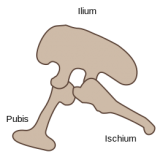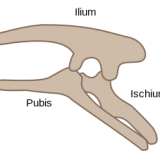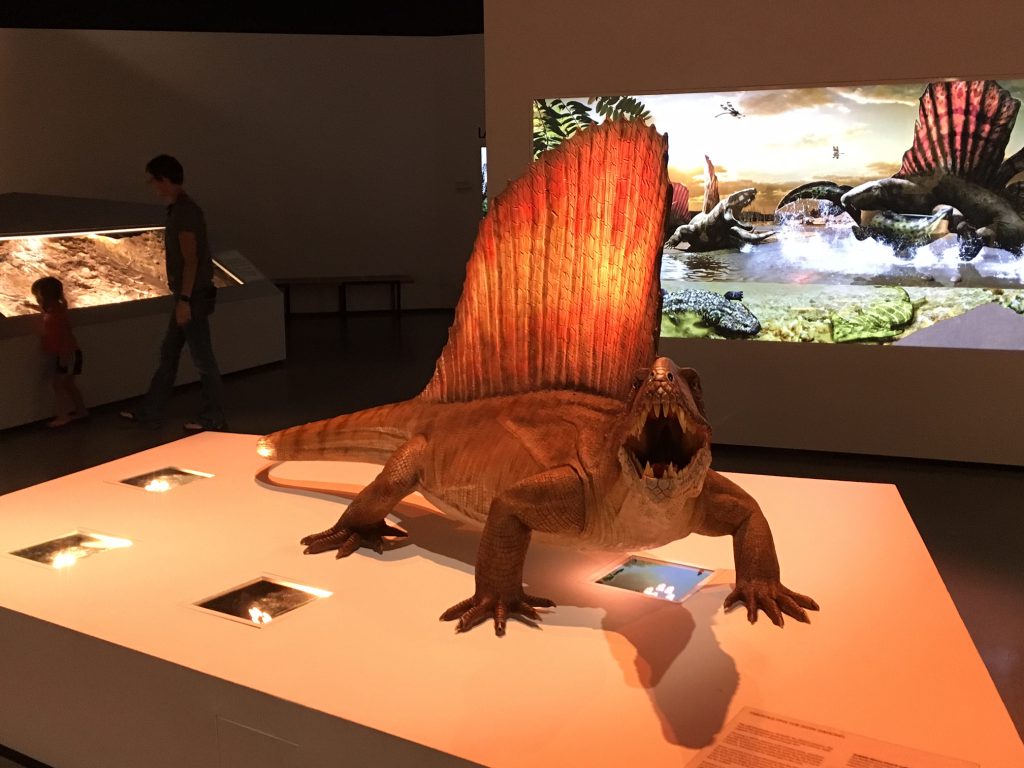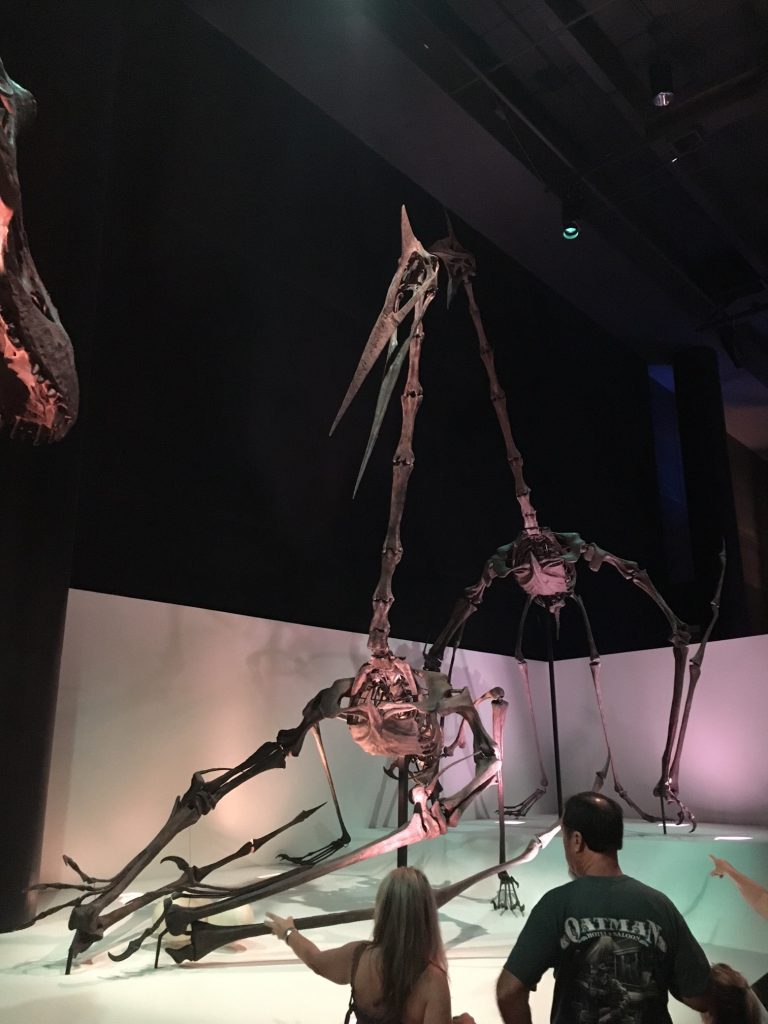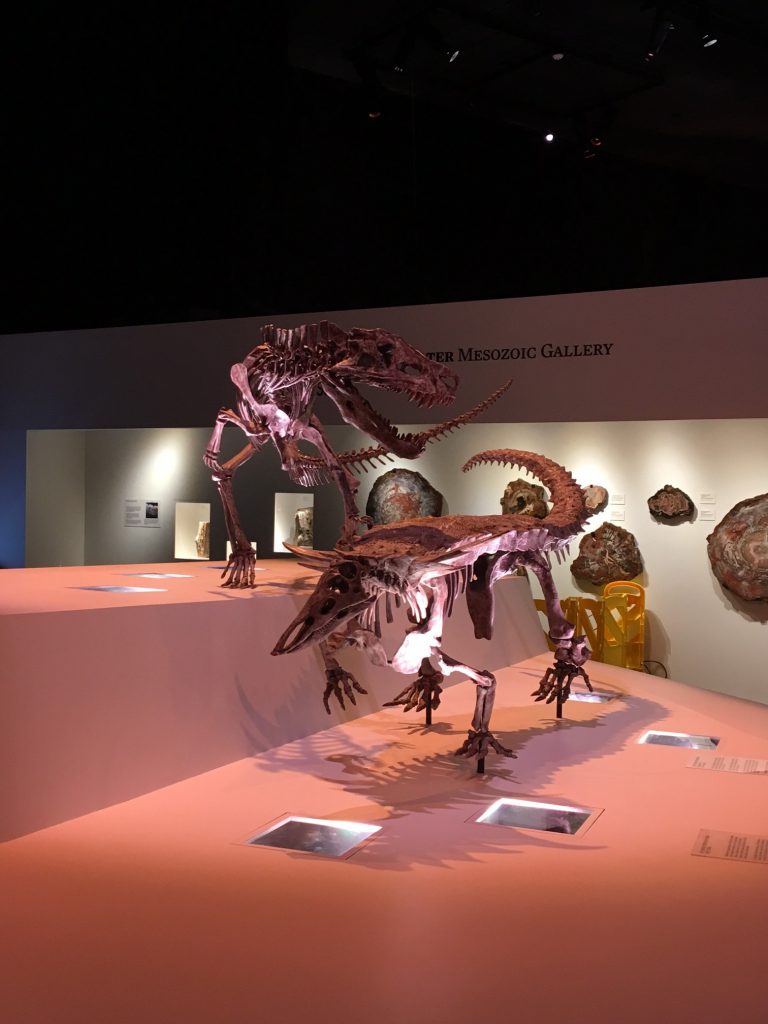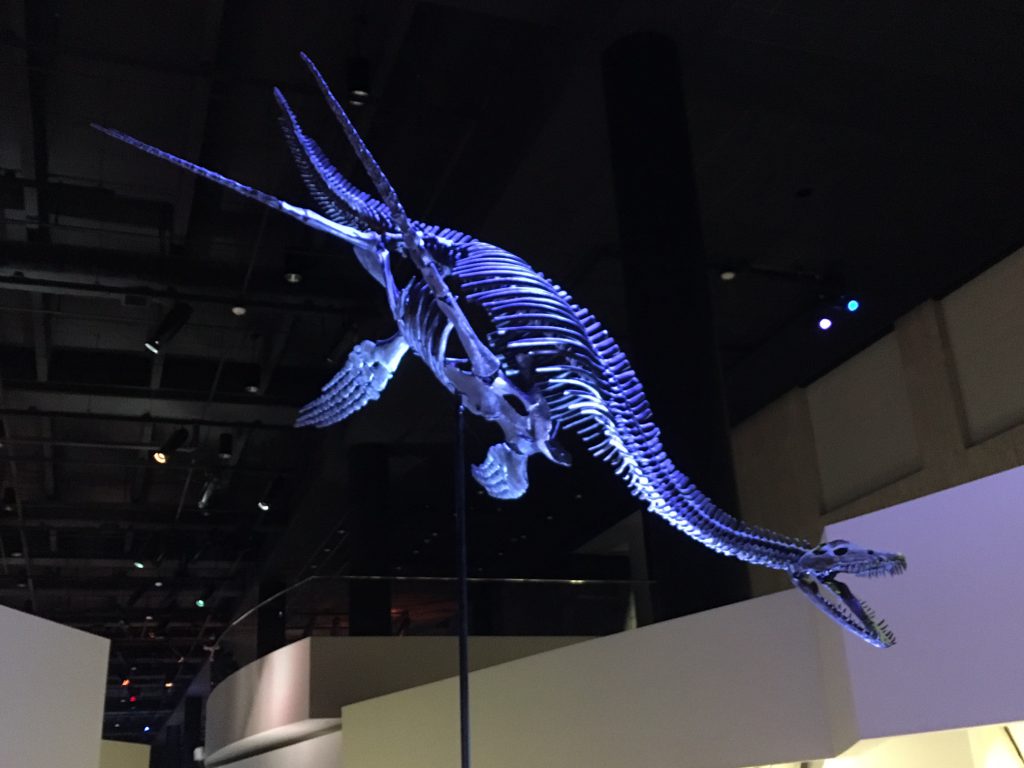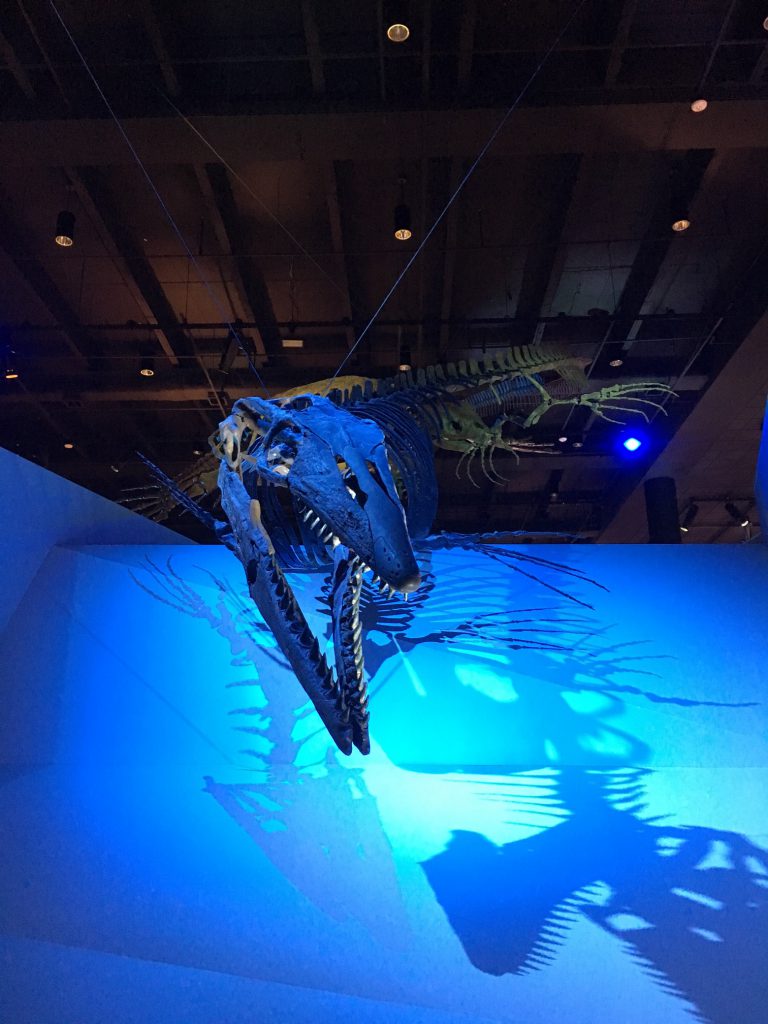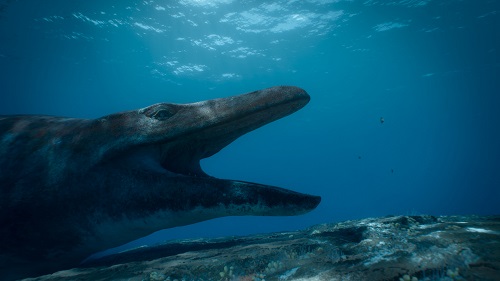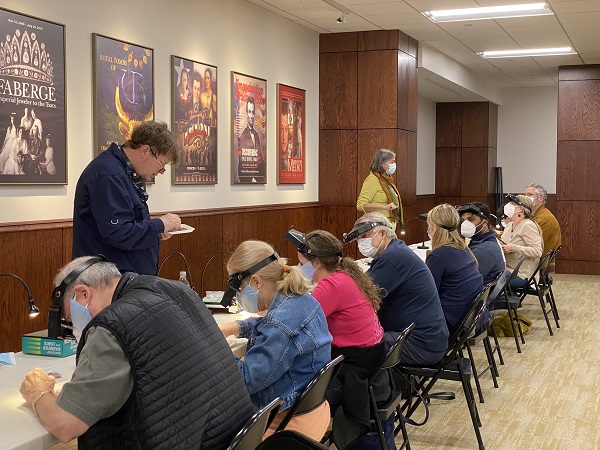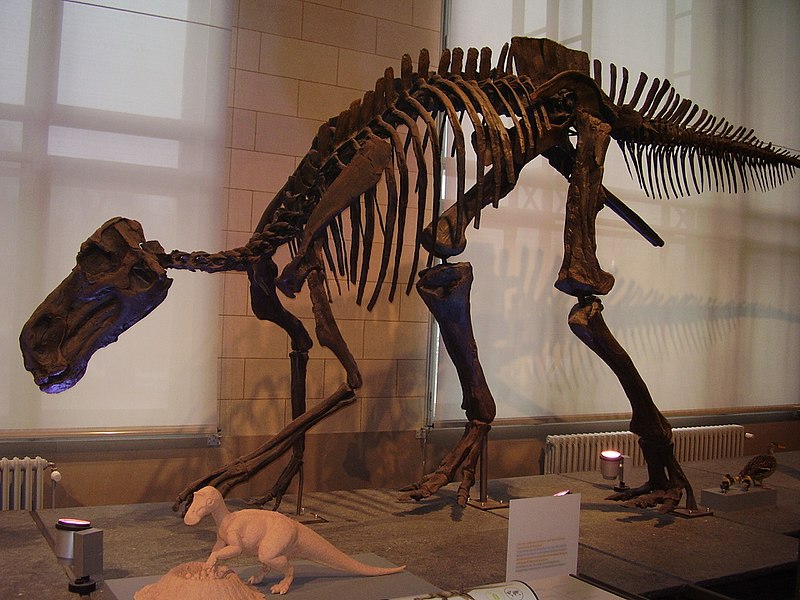In my years as a tour guide here at HMNS I encountered a lot of good questions. Most of the time the simplest questions were the best ones, like “what is a dinosaur?“. It’s a simple question but it has a complicated answer. For most people, the only prerequisite for being a dinosaur is being scary, scaly and ancient. But in fact, there are lots of scary and scaly animals that are not dinosaurs and some dinosaurs that aren’t scary or scaly! Don’t even get me started on ancient. The exhibits in our Morian Hall of Paleontology are arranged by time period and dinosaurs don’t even show up until half way through the hall. The first half is dedicated to a host of fascinating ancient creatures that ruled the world long before dinosaurs existed!
So what does make a dinosaur? Well the most obvious difference is the hips! Broadly speaking, there are two types of dinosaurs: bird-hipped (ornithischian) and lizard-hipped (saurischian) dinosaurs.
Both of these hip structures do something that reptile and amphibian hip structures cannot; they allow the animal to stand on top of its legs. Look at the model of Dimetrodon from our hall pictured below:
Notice that its legs are splayed out to the sides of the animal. This leg posture is similar to what you see in reptiles like crocodiles and Komodo dragons. Dinosaurs are different, they walked much like modern mammals do. If you’re wondering why dinosaurs share this seemingly random similarity with mammals, the answer is because dinosaurs filled many of the same ecological niches that mammals do today. Some were predators, others prey, some insectivores and others scavengers. So it makes sense that even though the animals are so distantly related to us, they would still evolve similar features that help them do their job better, like run fast, jump or simply travel further. And that’s not all we might have in common with dinosaurs! Paleontologists are debating whether some dinosaurs were homeothermic (warm blooded).
Here’s a list of some of the animals in our Morian Hall of Paleontology that are often mistaken for dinosaurs:
Pterosaurs
Pterosaurs, like the quetzalccoatlus’ pictured above, are archosaurs. Archocaurs are an interesting bunch, the group includes all the relatives of birds and crocodiles. The bird side of the family includes dinosaurs, pterosuars and a few others. but that’s where the relationship between pterosaurs and dinosaurs ends. The earliest pterosaurs begin to show up in the fossil record during the late Triassic, 225 million years ago, around the same time that dinosaurs show up, but they possess a number of skeletal differences. Their wing structures are very different from birds, who did evolve from dinosaurs. Pterosaurs basically fly with their pinkys; their last digit growing very long (several feet long in larger species) to support the wing. They were the first animals other than insects to evolve powered flight.
Postosuchus and Desmatosuchus
Postosuchus and desmatosuchus are on the crocodile side of the archosaur family. Notice the bony-looking scutes on desmatosuchus’ back (animal on the right), those are the same types of structures that crocodiles have on their backs. Postosuchus (to the left) was a predator who lived a life somewhat like dinosaur predators like Allosaurus would later live, but the hip structure of postosuchus only allows it to walk on two legs for short distances, perhaps just long enough to leap into the back of its prey. Here we can see how seemingly small skeletal differences between dinosaurs and their distant archosaur cousins can have a major impact on the animal’s lifestyle and appearance.
Archosaur means “ruling reptile” and during the Triassic period these animals indeed ruled the world until an extinction event at the end of the Triassic wiped out a huge number of archosaur species. Afterwards it was the time of the dinosaurs, before then a relatively minor group, to rule.
Pleisiosaurs
Dinosaurs may have learned to fly, but they didn’t swim in the ocean. Plesiosaurs belong to a group of reptiles that evolved to live in the oceans called sauroptegerians. Pleisiousaurs reached their peak in the Jurassic period, but their lineage can be traced back to the early Triassic, long before dinosaurs even evolved.
Tylosaurus
Tylosarus is part of a group of marine reptiles that show up in the second half of the Cretaceous called mososaurs. They are not related to plesiosaurs, in fact they preyed upon their long-necked counterparts, and also fish, sharks, sea birds, other mososaurs, and pretty much any other living thing that crossed their path. They had an extra row of teeth in the roof of their mouth which helped pull their prey down their throat.


